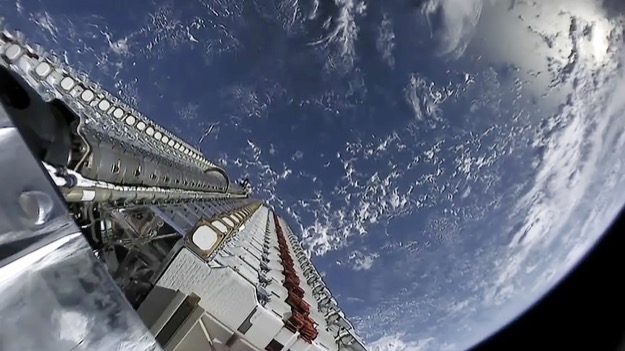
Beta testers are getting reasonable speeds from Elon Musk’s nascent Starlink satellite broadband system, according to test results posted on reddit.com. It’s faster performance than most DSL service, and in the same ballpark as older cable systems.
Reasonable, but not spectacular.
In the couple dozen results reported, download speeds were between 16 Mbps and 114 Mbps (discounting a partial measurement of 11 Mbps), with most clustered in the 40 Mbps to 60 Mbps range. Measured upload speeds varied from 5 Mbps to 42 Mbps, with 10 Mbps to 20 Mbps typical. There was a wide spread in latency – the time lag for data to make a round trip. Fastest response was 18 milliseconds and the slowest was 94 milliseconds.
Starlink is a low earth orbit (LEO) system, which means that the path up to the satellite and back down to the ground is only a few hundred miles. That means it takes a lot less time for data to get to where it’s going than it would via traditional geosynchronous satellites, which are tens of thousands of miles away.
Low earth orbit also means that the satellites move quickly overhead, and accessing them requires much more complex equipment. Each Starlink satellite is considerably smaller and less powerful than the geosynch birds. Put it all together and Starlink will certainly have serious capacity limits relative to terrestrial systems – something Elon Musk is quick to acknowledge – and it will likely have considerable variation in the speeds delivered minute to minute, as the test results imply.
Those kinds of numbers aren’t likely to win any subsidies in the Federal Communications Commission’s upcoming Rural Digital Opportunity Fund auction either. Starlink is very much a work in progress. In order to move out of the proof of concept stage and into full commercial availability, the company will have to launch a lot more satellites and develop new technology. Both are doable, but neither are guaranteed.
But it’s looking like Starlink, and perhaps other LEO constellations, will have at least a supporting role to play in filling some of the world’s intractable broadband gaps.
